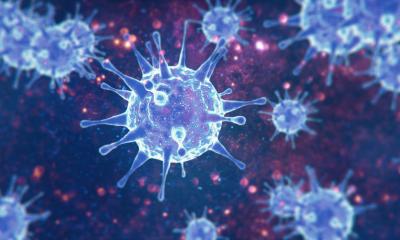Image source: Unsplash/Noah
News • COVID-19 prevention
Social distancing: does it work?
The number of cases tested positive for COVID-19 initially grew exponentially in China, but then slowed down. Dirk Brockmann, professor at Humboldt-Universität zu Berlin (HU) and project group leader at the Robert Koch-Institut (RKI), and his postdoc Benjamin F. Maier have developed a diffusion model that takes into account the effect of social distancing and other measures to explain this effect.
The results of their study have now been published in the online edition of the journal Science. "An exponential growth in case numbers can generally be expected when an infectious disease spreads unhindered," explains Brockmann. "For example, one infected person infects three people, these three people in turn infect three people each - and after a very short time, there are many people who have become ill." According to Brockmann, however, this growth could not be observed in China later. "Since the end of January, the number of cases grew steadily slower and then flattened out."
Recommended article

Article • The math behind corona
Predicting the future of the Covid-19 pandemic with data
Mathematical models can help shed light on the evolution of the coronavirus pandemic, according to Spanish mathematician Juan Luis Fernández Martínez, who predicted Spain could have between 90,000 and 160,000 infected patients. The next trend in epidemic data science will be to issue prediction models that focus on early detection.
The theoretical physicists see the cause of this effect as individual behavioral changes in accordance with social distancing or government measures such as contact tracing and curfews. Over time, these lead to fewer and fewer contacts between infected and non-infected persons, which leads to a temporal decrease in the so-called reproduction rate. "If a person infects three more people on average, but then only two people each and then only one person each, the outbreak grows more slowly than exponentially - we call this sub-exponential," explains Brockmann's colleague Maier.
In their model, the researchers assume that, over time, more and more non-infected people are shielded from the spreading process. "Thus, the number of new infections per day soon reaches a maximum and then drops again," says Brockmann. In the meantime, similar effects can be observed in other countries, for example in Italy, Spain or Germany.
A potential tipping point
The researchers are not yet giving the all-clear: "While we are seeing a slight decrease in new infections in Italy and Spain, this behaviour is not yet beginning to show in Germany. So we are currently at a critical point: if the number of contacts continues to fall, the outbreak can be contained. However, if this does not happen, the total number of cases would continue to rise. "A lot now really depends on our own behaviour," says Maier.
Source: Humboldt-Universität zu Berlin
09.04.2020











